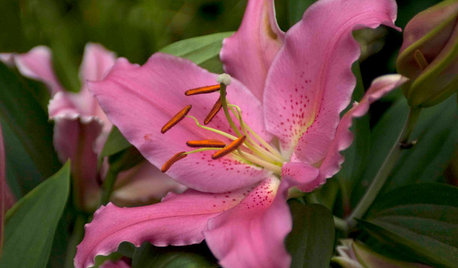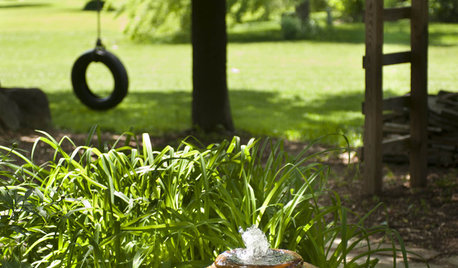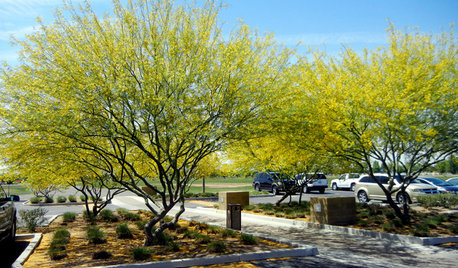hybridizing transfer of triats
chills71
18 years ago
Related Stories

EDIBLE GARDENSSummer Crop: How to Grow Blueberries
Plant blueberries in spring or fall for garden beauty through three seasons — and a sweet superfood in summer
Full Story
REMODELING GUIDESSupporting Act: Exposed Wood Trusses in Design
What's under a pitched roof? Beautiful beams, triangular shapes and rhythm of form
Full Story
FLOWERSGreat Design Plant: Lilies
Try these delightfully exotic stunners for paintbox colors, deep fragrance and intricately detailed petals
Full Story
GARDENING AND LANDSCAPINGHow to Give Your Garden More Soul
Feel more at home in your garden by giving it deep, personal meaning
Full Story
GREEN BUILDINGLet’s Clear Up Some Confusion About Solar Panels
Different panel types do different things. If you want solar energy for your home, get the basics here first
Full Story
POOLS8 Ideas for Petite Pools
Modest in size but big on looks and function, pools like these offer a private swim space without requiring lots of room
Full Story
TREESGreat Design Plant: Desert Museum Palo Verde Offers a Colorful Canopy
Rising above others with its long bloom time, artful vase shape and lack of thorns, this tree is great for casting filtered shade
Full Story
GARDENING GUIDES6 Unsung Bulbs for Fall Planting
Don't hang up your spade after summer — plant these unusual bulbs in fall for a spectacular spring show
Full Story
ARCHITECTUREDesign Practice: Getting Paid
Pro to pro: Learn how to manage contracts and set up the right fee structure for your work
Full Story
FIREPLACESUpdated Woodstoves Keep Home Fires Burning
Better technology means more efficiency than ever for modern woodstoves
Full Story





patsy_b
passionflow
Related Professionals
Bridgetown Landscape Architects & Landscape Designers · Belmont Landscape Architects & Landscape Designers · Hershey Landscape Architects & Landscape Designers · Tempe Landscape Contractors · Cockeysville Landscape Contractors · Fort Myers Landscape Contractors · New Baltimore Landscape Contractors · Oxnard Landscape Contractors · Royal Oak Landscape Contractors · Northbrook Driveway Installation & Maintenance · Raynham Driveway Installation & Maintenance · ‘Ewa Beach General Contractors · Geneva General Contractors · Valley Station General Contractors · Vincennes General Contractorschills71Original Author
passionflow
kiwinut
passionflow
kiwinut